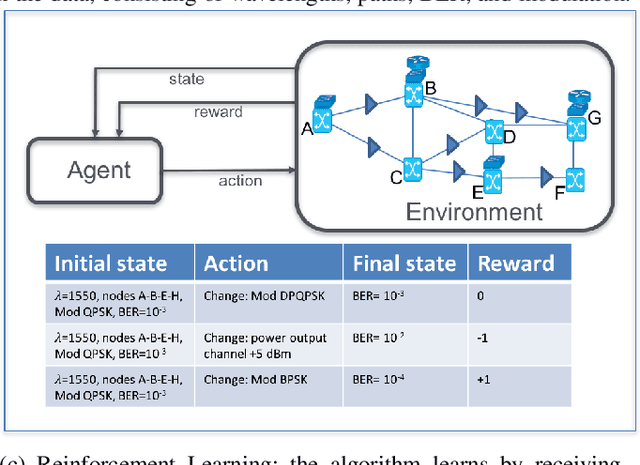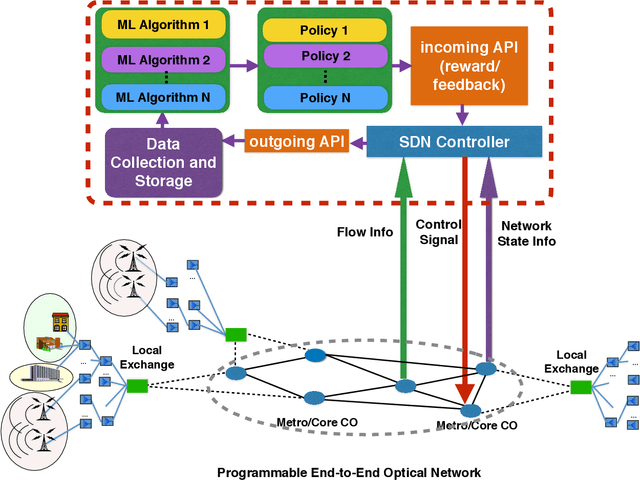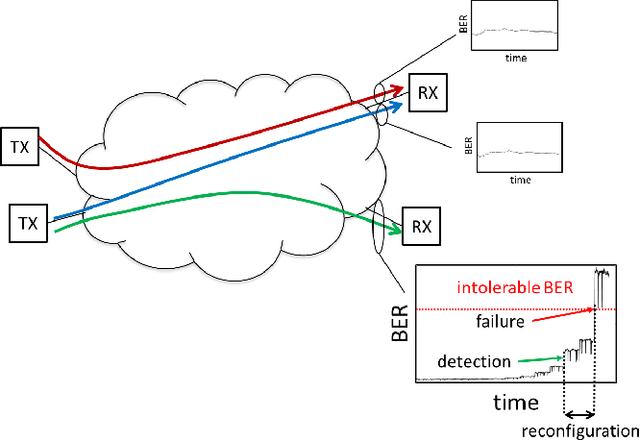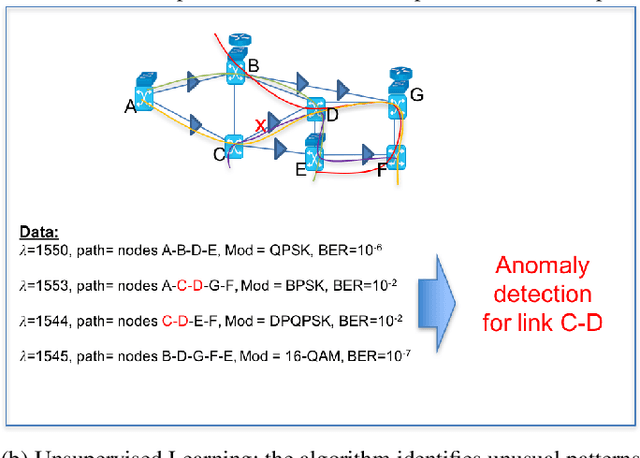Francesco Musumeci
Vertical Federated Learning for Failure-Cause Identification in Disaggregated Microwave Networks
Feb 05, 2025Abstract:Machine Learning (ML) has proven to be a promising solution to provide novel scalable and efficient fault management solutions in modern 5G-and-beyond communication networks. In the context of microwave networks, ML-based solutions have received significant attention. However, current solutions can only be applied to monolithic scenarios in which a single entity (e.g., an operator) manages the entire network. As current network architectures move towards disaggregated communication platforms in which multiple operators and vendors collaborate to achieve cost-efficient and reliable network management, new ML-based approaches for fault management must tackle the challenges of sharing business-critical information due to potential conflicts of interest. In this study, we explore the application of Federated Learning in disaggregated microwave networks for failure-cause identification using a real microwave hardware failure dataset. In particular, we investigate the application of two Vertical Federated Learning (VFL), namely using Split Neural Networks (SplitNNs) and Federated Learning based on Gradient Boosting Decision Trees (FedTree), on different multi-vendor deployment scenarios, and we compare them to a centralized scenario where data is managed by a single entity. Our experimental results show that VFL-based scenarios can achieve F1-Scores consistently within at most a 1% gap with respect to a centralized scenario, regardless of the deployment strategies or model types, while also ensuring minimal leakage of sensitive-data.
A Survey on Application of Machine Learning Techniques in Optical Networks
Oct 05, 2018



Abstract:Today's telecommunication networks have become sources of enormous amounts of widely heterogeneous data. This information can be retrieved from network traffic traces, network alarms, signal quality indicators, users' behavioral data, etc. Advanced mathematical tools are required to extract meaningful information from these data and take decisions pertaining to the proper functioning of the networks from the network-generated data. Among these mathematical tools, Machine Learning (ML) is regarded as one of the most promising methodological approaches to perform network-data analysis and enable automated network self-configuration and fault management. The adoption of ML techniques in the field of optical communication networks is motivated by the unprecedented growth of network complexity faced by optical networks in the last few years. Such complexity increase is due to the introduction of a huge number of adjustable and interdependent system parameters (e.g., routing configurations, modulation format, symbol rate, coding schemes, etc.) that are enabled by the usage of coherent transmission/reception technologies, advanced digital signal processing and compensation of nonlinear effects in optical fiber propagation. In this paper we provide an overview of the application of ML to optical communications and networking. We classify and survey relevant literature dealing with the topic, and we also provide an introductory tutorial on ML for researchers and practitioners interested in this field. Although a good number of research papers have recently appeared, the application of ML to optical networks is still in its infancy: to stimulate further work in this area, we conclude the paper proposing new possible research directions.
 Add to Chrome
Add to Chrome Add to Firefox
Add to Firefox Add to Edge
Add to Edge